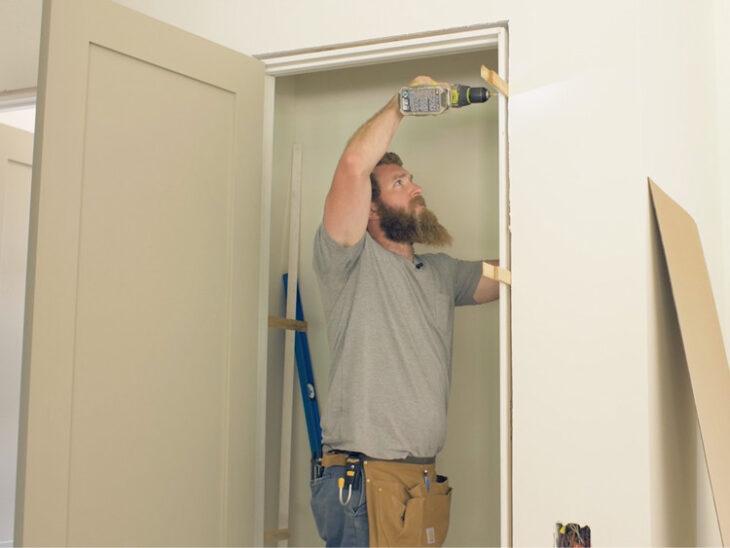You want to change the appearance of a particular room in your house. It may be that you just need a door. A pre-hung interior can improve the functionality of your home and give it a new look. It may seem daunting, but with the right tools, and a little guidance, it’s not impossible.
What is the Difference Between a Slab Door and a Pre-hung Door?
It’s important to know the difference between pre-hung and slab doors before you begin installing. Pre-hung doors are a complete package that includes the frame, door, and hinges. They can be easily installed into a rough opening. Installation is often quicker and easier, especially for those who are not experienced carpenters.
A slab door, on the other hand is the door only no frame, no hinges. It takes more skill to install a slab-style door, since you will need to align it correctly, fit it into the frame and cut out space for the latch and hinges.
Pre-Hung Doors Types
There are many styles and materials available for pre hung doors in NZ, including:
- Solid Wood: These doors are durable and sturdy. They also have a luxurious look. These doors are good for soundproofing, but they cost more and can swell in humid conditions.
- Hollow Core: These hollow core doors are lightweight, budget-friendly and ideal for indoor applications that require less sound insulation.
- Solid Core: These composite filled doors offer better sound insulation than hollow-core doors and are more cost-effective compared to solid wood.
- Fiberglass: Known as a durable material that resists warping and is ideal for humid areas, fiberglass doors can be used in these environments. They can mimic the look of wood.
- Steel: Although these doors are very secure, they are less versatile than other materials and require regular maintenance to keep them from rusting.
Installation Tools and Materials
Gather the following materials and tools before you start:
- Circular saw
- Door Hardware
- Drill/driver
- Hammer
- The Level
- Nail gun (optional)
- Screws
- Shims
- Tape measure
Measure the Door Opening
Measure the width of the opening at the top, bottom, and middle. Also, measure the height in the middle and on both sides. Check if the floor level is the same across the entire opening. The rough opening of the door should be 2 inches larger and taller.
Check wall studs and outlets for damage or rot. Make sure that the new frame will not block electrical switches or outlets.
Installing Pre-hung Doors
The installation of a pre-hung entry door requires several steps. This guide will help you.
Prepare the Doorframe
Mark spots with a level on both sides of your rough opening. From these marks, measure down to the floor from both the hinge side and the striker side. Then transfer these measurements onto the door jamb. Add a spacer if your floor is not perfectly level, especially in older houses.
Installing the Door
If necessary, add shims to the frame. Slide the door in the opening and make sure it is flush with the wall. Silva shows how to level out uneven floors with the help of a door frame.
Secure the Door
Pre-drill and screw through the hinge side jamb to the framing. Before securing the jamb, make sure it is level. Close the door and check for fit. Make any adjustments necessary. Use shims on the striker side to keep the gap even around the door. If necessary, add additional screws for stability.
The Final Adjustments and Finishing Touches for Your Door
Open and close the door a few more times after securing it to ensure that it works smoothly. You may need to trim the edges of the door if there are any sticking spots.
Install trim using a hammer or nail gun, then add the door knob hardware. Apply caulk to the trim, lightly sand and prime the wood, then paint it for a polished look.
Troubleshooting Common Issues with Doors
You may still encounter problems, even if you install the system carefully. You can resolve them by following these steps:
- The Door is not Closing Correctly: Make sure that the jambs are square and plumb, and the hinges have been seated properly. It is possible that you need to adjust your strike plate.
- Gaps Around the Door: Adjust the shims Behind the Hinges or Reposition the Strike Plate. Weather stripping is another way to create a better seal.
- Squeaky Hinges: Remove the hinge pins, apply lubricant and tighten any loose screw, or replace worn out hinges.
- Sticking Points: If moisture is causing wood to swell use a humidifier or sand that area. If the frames are uneven, you can sand them or adjust the frame.
- Loose Door Knobs: Tighten screws on mounting plates, check that the latch works smoothly and replace any old hardware, if necessary.
The Conclusion
With the right preparation, and patience, installing a pre-hung door interior is not difficult. Our tips and tricks will help you achieve a professional result, which enhances the appearance and functionality of your house. Don’t rush, take your time and measure well. If you need help, don’t be afraid to ask for it.
